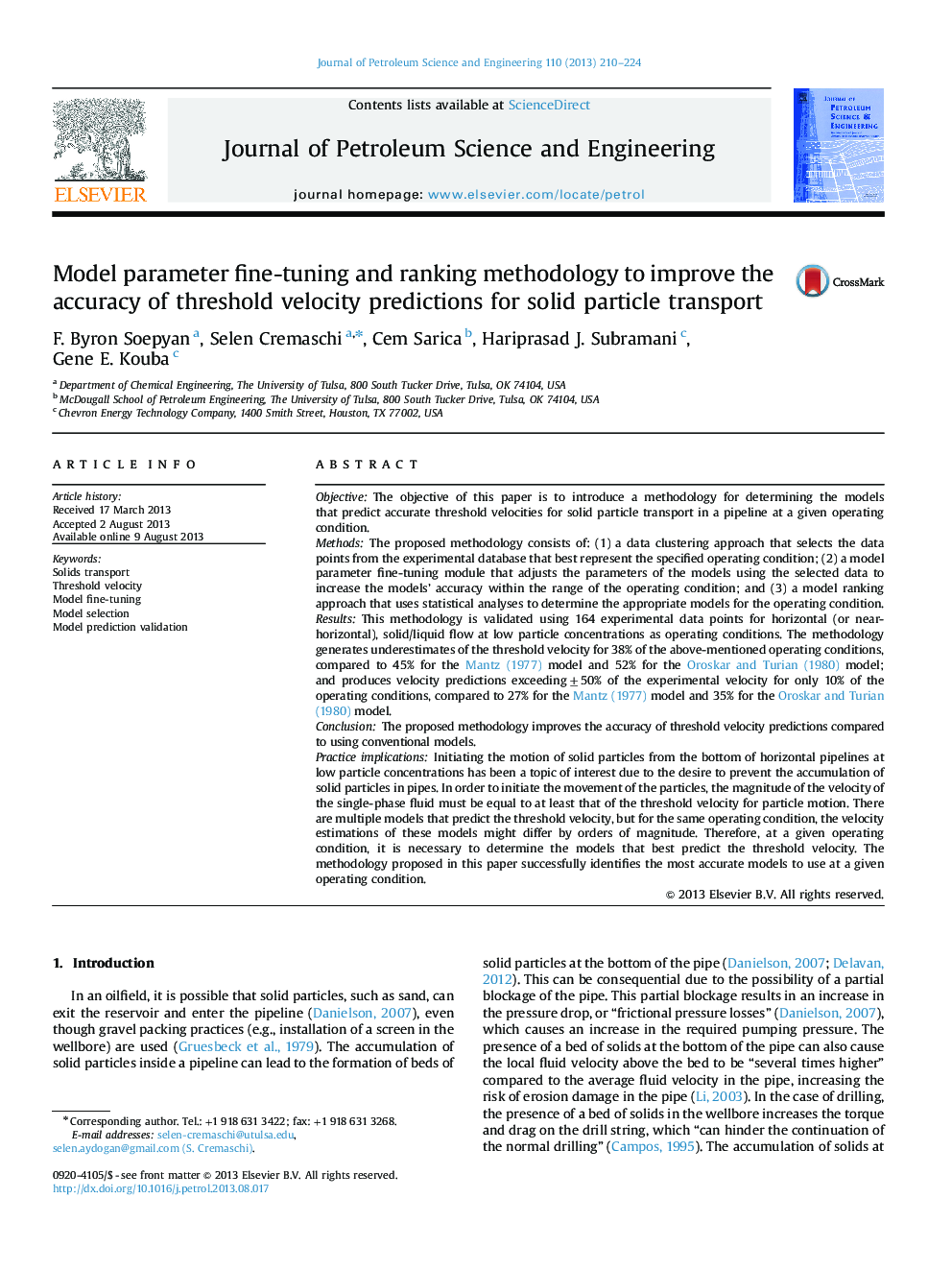| Article ID | Journal | Published Year | Pages | File Type |
|---|---|---|---|---|
| 1755207 | Journal of Petroleum Science and Engineering | 2013 | 15 Pages |
•We developed a method to quantify the threshold velocity for solids transport.•Three steps used: data clustering, model parameter fine-tuning, and model ranking.•The methodology generates accurate velocity predictions for the operating condition.•Smaller errors are produced by the methodology compared to using individual models.
ObjectiveThe objective of this paper is to introduce a methodology for determining the models that predict accurate threshold velocities for solid particle transport in a pipeline at a given operating condition.MethodsThe proposed methodology consists of: (1) a data clustering approach that selects the data points from the experimental database that best represent the specified operating condition; (2) a model parameter fine-tuning module that adjusts the parameters of the models using the selected data to increase the models’ accuracy within the range of the operating condition; and (3) a model ranking approach that uses statistical analyses to determine the appropriate models for the operating condition.ResultsThis methodology is validated using 164 experimental data points for horizontal (or near-horizontal), solid/liquid flow at low particle concentrations as operating conditions. The methodology generates underestimates of the threshold velocity for 38% of the above-mentioned operating conditions, compared to 45% for the Mantz (1977) model and 52% for the Oroskar and Turian (1980) model; and produces velocity predictions exceeding±50% of the experimental velocity for only 10% of the operating conditions, compared to 27% for the Mantz (1977) model and 35% for the Oroskar and Turian (1980) model.ConclusionThe proposed methodology improves the accuracy of threshold velocity predictions compared to using conventional models.Practice implicationsInitiating the motion of solid particles from the bottom of horizontal pipelines at low particle concentrations has been a topic of interest due to the desire to prevent the accumulation of solid particles in pipes. In order to initiate the movement of the particles, the magnitude of the velocity of the single-phase fluid must be equal to at least that of the threshold velocity for particle motion. There are multiple models that predict the threshold velocity, but for the same operating condition, the velocity estimations of these models might differ by orders of magnitude. Therefore, at a given operating condition, it is necessary to determine the models that best predict the threshold velocity. The methodology proposed in this paper successfully identifies the most accurate models to use at a given operating condition.
